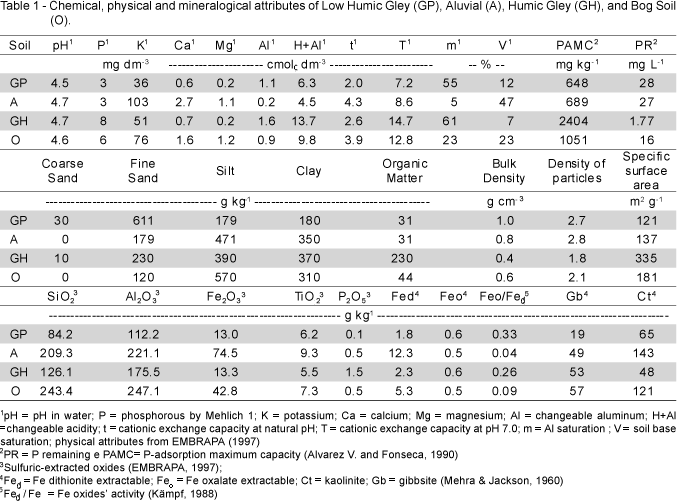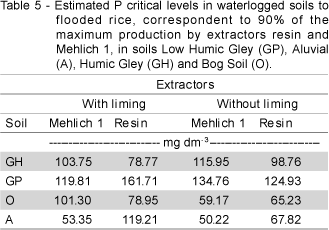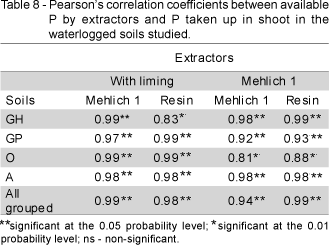Lowland soils present a great potential for the flooded rice crop. This work aimed to estimate critical levels of P in waterlogged soils cultivated with rice using Mehlich 1 and anion exchange resin as soil-P extractors, compare the performance of these extractors as for the evaluation of the P availability, and study the soil-P fractions involved in the P nutrition of the rice crop. Studied soils consisted of four Histosols: Low Humic Gley (GP), Aluvial (A), Humic Gley (GH) and Bog Soil (O) which were previously cultivated with beans. The experimental design was completely randomized, in a factorial scheme, using four soils, five P rates (75, 150, 300, 500 and 800 mg dm-3) and two liming treatments (with and without liming), with three replicates. After 60 days of flooding, soil samples were submitted to P extraction by Mehlich 1 and resin, and phosphorous fractionation. Two rice plants were cultivated in pots containing 3 dm³ of waterlogged soils. The labile P and the moderately labile P of the soils contributed for rice nutrition. The two tested extractors presented efficiency in the evaluation of P availability for the rice cultivated in lowland waterlogged soils.
Oryza sativa; phosphorus fractions; extractors








